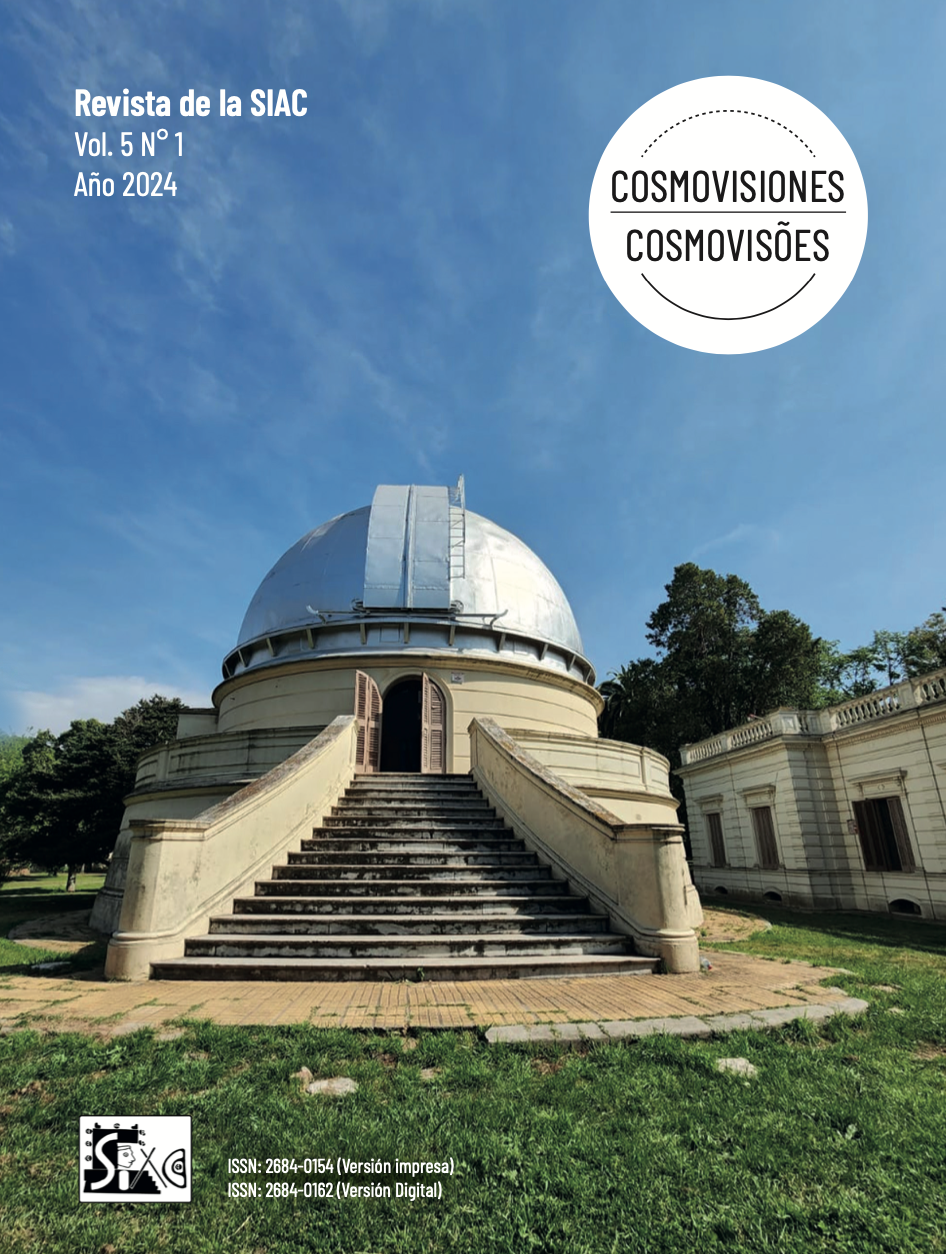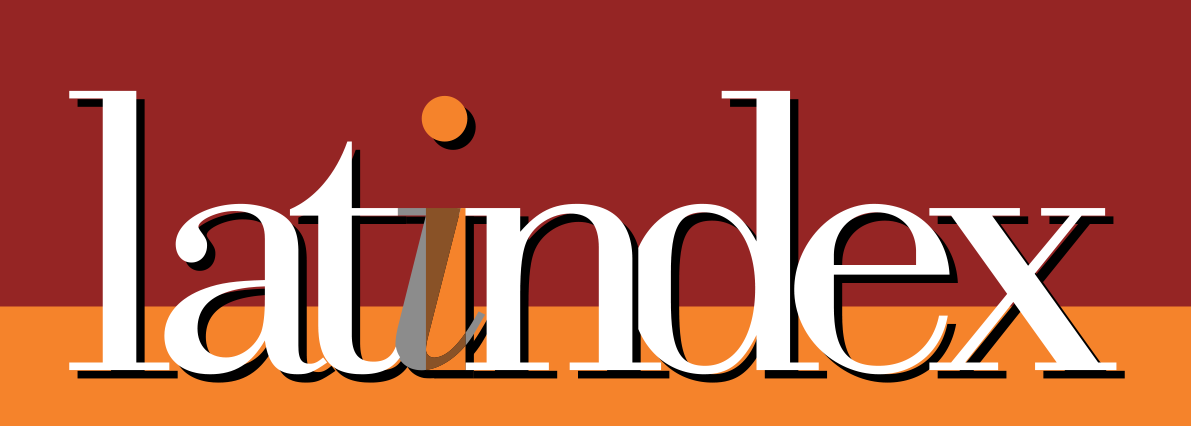Norman Lockyer e o início controverso da Arqueoastronomia
DOI:
https://doi.org/10.24215/26840162e023Palavras-chave:
Norman Lockyer, arqueoastronomia, Edfu, Stonehenge, Boscawen-Un, AveburyResumo
Há muito que se reconhece que Norman Lockyer desempenhou um papel central na fundação da arqueoastronomia no final do século XIX e início do século XX. O seu interesse por aquilo a que então se chamava “orientação” floresceu numa visita ao Egipto, onde ficou convencido de que poderiam ser usados métodos científicos rigorosos para provar teorias arqueológicas relativas a religiões antigas.
No entanto, apesar da perspetiva de um intelectual bem conhecido entrar no escasso discurso em torno da arqueoastronomia, pouco aconteceu para promover a disciplina após a expedição ao Egipto.
Embora Lockyer seja frequentemente apresentado como uma figura solitária a trabalhar nos primórdios do campo, os slides de lanterna mágica recentemente digitalizados dos arquivos do Norman Lockyer Observatory revelam as suas extensas interacções com uma rede dedicada de investigadores britânicos de arqueoastronomia. O trabalho de Lockyer, juntamente com o da sua nova comunidade, surgiu numa altura muito infeliz. Este artigo procura explicar por que razão o seu trabalho arqueoastronómico não foi bem recebido por arqueólogos proeminentes e por que razão o discurso em torno da arqueoastronomia até à sua época abafou as tentativas de Lockyer de legitimar a orientação.
Downloads
Referências
Death of Sir E. Antrobus: Owner and guardian of Stonehenge. (1915, February 13). The Times. https://www.newspapers. com/article/the-times-death-of-sir-e-antrobus/46106563/.
Professor Proctor criticised. (1879, December 12). New York Herald. https://chroniclingamerica.loc.gov/lccn/sn83030313/1879-12-12/ed-1/seq-5/.
Sir Norman Lockyer at Penzance. (1906, April 21). The Cornishman. http://WDAgo.com/s/fa298d3f.
The druids at Stonehenge. (1905, August 26). Gloucester Journal. https://www.britishnewspaperarchive.co.uk/viewer/bl/0000532/19050826/108/0008.
Antrobus, E. (1901, May 12–1905, October 27). Correspondence with J. N. Lockyer. http://WDAgo.com/s/7f54f12f.
Barton, R. (2007, October 10). Lockyer’s columns of controversy in Nature. Nature. https://www.nature.com/articles/d41586-019-01813-3/.
Brugsch-Bey, H. (1881). A history of Egypt under the Pharaohs: Derived entirely from monuments. John Murray.
Curran, A. (2014). Anthropology. In D. Brewer (Ed.), The Cambridge companion to the French Enlightenment (pp. 29–43). Cambridge University Press.
Dupuis, C. F. (1795). Origine de tous les cultes, ou la réligion universelle. H. Agasse.
Dupuis, C. F. (1806). Mémoire explicatif du Zodiaque, chronologique et mythologique. Libraire pour les Mathématiques.
Eliot, G. (1879). The modern hep! Hep! Hep! In Impressions of Theophrastus Such. William Blackwood and Sons.
Eliot, G. (2014). Daniel Deronda. Oxford World’s Classics.
Finnegan, D. A. (2021). Richard Proctor and the tempo of science. In The voice of science: British scientists on the lecture circuit in Gilded Age America (pp. 94–129). University of Pittsburgh Press.
Frazer, G. J. (1905, March 19–1906, February 2). Correspondence with J. N. Lockyer. http://WDAgo.com/s/a44a097f.
Gingerich, O. (1984). Preface. In Astrophysics and twentieth-century astronomy to 1950: Part A. Cambridge University Press.
Griffith, J. (1928). Sir Norman Lockyer’s astronomical survey of Egyptian temples and ancient British stone monuments. In T. M. Lockyer & W. L. Lockyer (Eds.), Life and work of Sir Norman Lockyer (pp. 395–426). Macmillan.
Henty, L. (2022). Exploring archaeoastronomy: A history of its relationship with archaeology and esotericism. Oxbow Books.
Hutton, R. (2009). Blood and mistletoe:The history of the druids in Britain. Yale University Press.
Hutton, R. (2013). The strange history of British archaeoastronomy. Journal for the Study of Religion, Nature & Culture, 7(4), 376–396. https://doi-org.uoelibrary.idm.oclc.org/10.1558/jsrnc.v7i4.376.
Jarsaillon, C. (2018). Modern Egyptomania and early Egyptology: The case of Mariette’s 1867 Egyptian temple. Nineteenth-Century Contexts, 40(4), 359–376.https://doi.org/10.1080/08905495.2018.1484610.
Kember, J. (2019). The magic lantern: Open medium. Early Popular Visual Culture, 17(1), 1–8.https://doi.org/10.1080/17460654.2019.1640605.
Lockyer, J. N. (1868). Elementary lessons in astronomy. Macmillan.
Lockyer, J. N. (1893). Bundle of notes headed “Science: notes for art students”. http://WDAgo.com/s/049f91a4.
Lockyer, J. N. (1894). The dawn of astronomy: a study of the temple-worship and mythology of the ancient Egyptians. Cassell & Co.
Lockyer, J. N. (1906). Stonehenge and other British stone monuments astronomically considered. Macmillan.
Lockyer, J. N. (1906, December 13). Notes on ancient British monuments I – the Aberdeen circles. Nature, 75(1937), 150–153. https://doi.org/10.1038/075150a0.
Lockyer, J. N. (1907, November 21). Notes on ancient British monuments I. Nature,77(1986), 56–59.https://doi.org/10.1038/077056a0.
Lockyer, J. N. (1907, November 28). Notes on ancient British monuments II – the Cornish cromlechs. Nature, 77(1987), 82–84. https://doi.org/10.1038/077082a0.
Lockyer, J. N. (1907c, December 19). Notes on ancient British monuments III –some measurements in South Wales. Nature, 77(1990), 150–152.https://doi.org/10.1038/077150a0.
Lockyer, J. N. (1909). Surveying for archaeologists. Macmillan.
Lyons, H. G. (1892). The stars and the Nile. Nature, 47(1205), 101.https://doi.org/10.1038/047101a0.
Meadows, A. J. (2008). Science and controversy: A biography of Norman Lockyer. Macmillan.
Michell, J. (1989). A little history of astro-archaeology: Stages in the transformation of a heresy. Thames & Hudson.
Morrison, T. (2012). Solomon’s Temple, Stonehenge, and divine architecture in the English Enlightenment. Parergon, 29(1), 135–63.https://doi.org/10.1353/pgn.2012.0033.
Nissen, H. (1887). Uebertempel-orientirung. Rheinisches Museum Für Philologie, 42, 28–61. http://www.jstor.org/stable/41248094.
Notables of Britain: an album of portraits and autographs of the most eminent subjects of Her Majesty in the 60th year of her reign. (1897). London Review of Reviews. https://archive.org/details/notablesofbritai00londuoft/page/156/.
Panckoucke, C. L. F. (1820). Description of Egypt. Second edition. Antiquities, volume one plates. Library of Congress. https://www.loc.gov/item/2021669215/.
Payn, H. (1911, October 19). The orientation of the Great Temple of Amen-Ra at Karnak. Nature, 87(2190), 514–515.https://doi.org/10.1038/087514c0.
Penrose, F, & Penrose, F. C. (1875, July13–1906, April 28). Correspondence with J. N. Lockyer. http://WDAgo.com/s/b3e45893.
Penrose, F. C. (1893, December 31). On the results of an examination of the orientations of a number of Greek temples with a view to connect these angles with the amplitudes of certain stars at the time the temples were founded, and an endeavour to derive therefrom the dates of their foundation by consideration of the changes produced upon the right ascension and declination of the stars by the precession of the equinoxes. Philosophical Transactions of the Royal Society of London, 184, 805–34. https://doi.org/10.1098/rsta.1893.0016.
Petrie, W. M. F. (2013). The pyramids and temples of Gizeh. Cambridge University Press. (Original work published 1883)https://doi.org/10.1017/CBO9781107325227.
Polcaro, A.,& Polcaro, V. F. (2009). Man and sky: Problems and methods of archaeoastronomy. Archeologica e Calcolatori, 20, 223- 45.https://www.researchgate.net/publication/277844862_Man_and_sky_problems_and_methods_of_Archaeoastronomy.
Ryan, J. (1997). Picturing empire: Photography and the visualization of the British Empire. Reaktion Books.
Smith, J. W. (1910, October 21–27). Correspondence with J. N. Lockyer. http://WDAgo.com/s/d9f54c60.
Smith, W. R. (1889). Lectures on the religion of the Semites. Adam & Charles Black.
Smyth, P. C. (1870, December 2–1890, April 24). Correspondence with J. N. Lockyer. http://WDAgo.com/s/e0e72fda.
Smyth, P. C. (1864). Our inheritance in the Great Pyramid. Alexander Strahan.
Somerville, B. T. (1909). Ancient stone monuments near Lough Swilly, County Donegal, Ireland (Part I). Journal of the Royal Society of Antiquaries of Ireland,39 (2), 192–202.http://www.jstor.org/stable/25513989.
The Royal Institution of South Wales. (1908). Lecture on the antiquity of the Gorsedd. http://WDAgo.com/s/fa298d3f.
Williams, K. J. (2016). The antiquary: John Aubrey’s historical scholarship. Oxford University Press.
Downloads
Publicado
Como Citar
Edição
Seção
Licença
Copyright (c) 2024 Beatrice H. Steele

Este trabalho está licenciado sob uma licença Creative Commons Attribution-NonCommercial-ShareAlike 4.0 International License.
Os autores que publicam nesta revista concordam com os seguintes termos:
Os autores mantêm a autoria intelectual do trabalho e garantem à revista o direito de ser a primeira publicação do trabalho.
Os autores podem compartilhar o trabalho com reconhecimento de autoria e publicação inicial nesta revista .
Os autores podem estabelecer separadamente acordos adicionais para a distribuição não exclusiva da versão do trabalho publicado na revista (por exemplo, colocá-lo em um repositório institucional ou publicá-lo em livro), com reconhecimento de sua publicação inicial neste
A revista oferece acesso gratuito ("acesso aberto") a todo o seu conteúdo. Os artigos estão disponíveis para leitura, download, cópia, impressão e/ou pesquisa de acordo com a licença Creative Commons: CC BY-NC-SA (Attribution - Non-Commercial - Share Alike-4.0 International)

O conteúdo da revista está totalmente disponível a partir de sua publicação. Os leitores são obrigados a citar corretamente a revista e o autor do conteúdo baixado
















